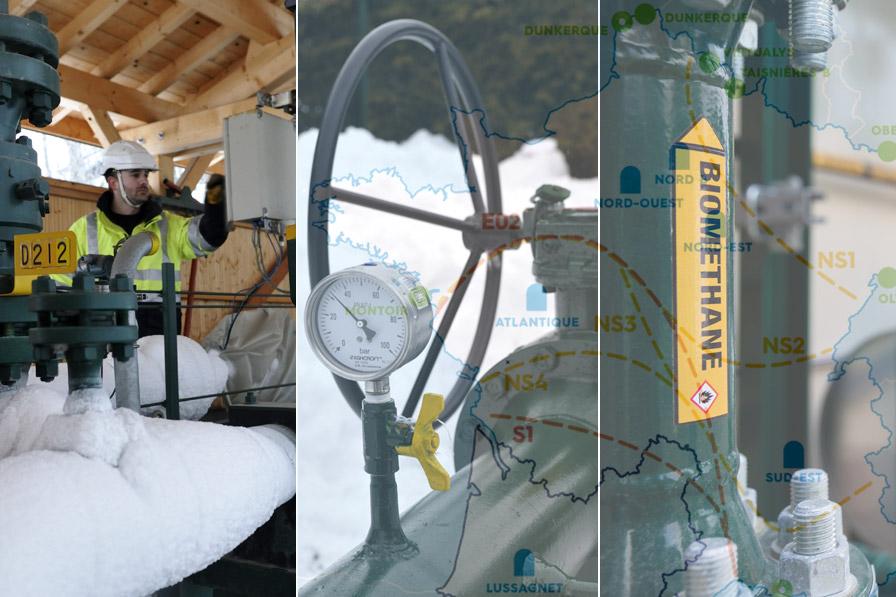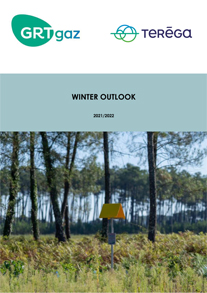Winter Outlook 2021/2022
Careful storage management is needed to guarantee the security of supply during exceptionally cold periods.

Thierry Trouvé, CEO of GRTgaz and Dominique Mockly, Chairman and CEO of Teréga, presented the “Winter Outlook 2021/2022” assessing the gas system’s prospects for the coming winter.

GRTgaz, which transports gas over the whole of France aside from the South-West region, and Teréga, which transports gas in the South-West region and operates 26% of the country’s gas storage capacities, confirm that the national gas system should be in a position to meet demand for all French consumers over the coming winter. In the event of peak demand due to exceptional cold weather, however, this will depend on the careful, balanced management of storage facilities throughout the winter.
Under the current circumstances, with high gas and LNG prices, and European stocks lower than in France, gas suppliers should look to maintain the capacities needed to supply their customers throughout the country until the end of the winter.
Subscribed capacities to cover demand during a very cold winter
Storage capacities put on the market for 2021/22 were 100% subscribed. The maximum subscription level was hence met for the fourth year in a row. The fill rate for the summer 2021 injection campaign was satisfactory. This was assisted by a French regulation requiring that stocks were at least 85% filled. At 1 November, following the injection campaign, French storage facilities were 95% filled.
As a result, subscribed capacities at different border entry points and for storage facility withdrawals are sufficient to cover demand during a very cold winter. This means that market stakeholders (shippers, industrial companies, gas suppliers, etc.) will be able to use all sources of supply (LNG and pipeline imports).
Meeting demand on a very cold day will likewise require overland supply from the borders, LNG imports and storage facility withdrawals.
Even if capacities subscribed by customers for these different supply sources slightly exceed peak cold needs, the effective coverage of this peak consumption is conditional on:
- anticipating LNG terminal inflows,
- storage facilities being sufficiently full to guarantee the necessary withdrawal capacities,
- and/or supplementary capacity subscriptions to route more gas from network entry points.
As a result, too great a reliance on stored gas at the start of this winter would make the system highly dependent on gas imports (overland and LNG). Careful storage therefore entails conserving gas storage levels until the end of winter 2022.
Specific mechanisms and monitoring to prevent bottlenecks
Plans are in place with Trading Region France1 for specific management mechanisms to resolve any occasional bottlenecks (constraints on the network). The effectiveness of these mechanisms assumes that gas is available in storage facilities upstream of these network constraints. GRTgaz and Teréga monitor these stocks continually throughout the winter to prevent bottlenecks.

1 Trading Region France (TRF): since November 2018, to simplify the gas market, France has used as single gas marketplace managed by GRTgaz and Teréga: Trading Region France
Renewable gases are now contributing to securing the gas supply
With the biomethane produced in France, renewable gases are now contributing to meeting the country’s consumption needs. At end-October 2021, 336 anaerobic digestion sites were injecting continuously into the gas networks, including 46 injecting directly into the GRTgaz and Teréga networks. With an annual production capacity of 6TWh, these sites injected the equivalent of almost 2% of France’s consumption into the gas networks for the month of October. The contribution of biomethane produced in France will be around 14 GWh/day over the winter - i.e. the equivalent production of half a nuclear unit.
Publications


